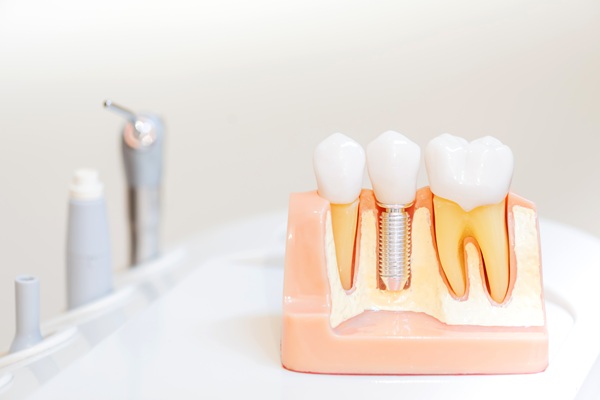3 Common Types of Jaw Surgery

Jaw surgery, formally known as orthognathic surgery, is a common procedure that an oral surgeon performs to address a range of dental and facial problems. Jaw surgery may involve manipulating the upper or lower jaw bones or both. This article will define the three most common types of jaw surgeries: maxillary ostomy, mandibular osteotomy, and maxilla-mandibular orthognathic surgery.
3 Types of Jaw Surgery
Understanding Malocclusion Classifications
While there are many reasons the oral surgeon will recommend jaw surgery, the main reason is due to severe malocclusions. Malocclusions are characterized by abnormal relationships between the teeth, jaws, and facial muscles. The word malocclusion refers to a faulty bite. They are divided into three main classes. Traditional orthodontic appliances, such as braces, can usually correct Class I. Class II malocclusions are for those who do not have enough vertical space between the upper and lower teeth due to underdevelopment in the jaw. Class III malocclusions result from a traumatic injury, undeveloped upper or lower jawbone, receding chin, or a genetic trait.
Maxillary Osteotomy
Maxillary osteotomy is a surgical procedure that repositions the maxilla (upper jaw) in order to correct an anterior crossbite or open bite. The oral surgeon will also use this procedure to correct jaw deformities such as mandibular prognathism, mandibular retrognathism, and skeletal class II malocclusions.
This jaw surgery involves the removal of bone from the upper jaw and repositioning it, lengthening it, or shortening it where needed. The surgeon will make incisions in the bones on both sides of the upper jaw and realign them into position with biocompatible titanium plates, wires, and screws.
Mandibular Osteotomy
Mandibular osteotomy is usually performed on patients who have severe facial asymmetry, who are not candidates for traditional orthodontic treatment, or who have had previous orthodontic treatment that failed to correct their malocclusion. In addition, this form of jaw surgery may help those with class III malocclusions, problems with speech or swallowing, temporomandibular joint (TMJ) disorder, sleep apnea, or facial defects noticed at birth.
The surgery involves making an incision in the gum line to access the mandible (lower jaw). The surgeon will then cut through the jawbone, realigning it to improve its position. If necessary, the surgeon will also reposition the teeth before fusing pieces of the jawbone back together with titanium plates, wires, and screws.
Maxillo-Mandibular Orthognathic Surgery (Double Jaw Surgery)
In some cases, patients may be experiencing class II and III malocclusions; therefore, the surgeon may recommend the maxillo-mandibular orthognathic procedure. It is important for patients to understand that this jaw surgery may happen in one session or multiple, depending on the patient's condition.
During the procedure, the surgeon will need to cut into both the upper and lower jaw bones to remove pieces and reposition them and the teeth or dental restorations (if applicable). The surgeon will then attach titanium plates, wires, and screws into both jawbones, remaining in place until after healing.
Schedule a consultation
Jaw surgery can be a great option for those with deformities in their jaw and those with conditions that cannot be corrected with traditional orthodontic appliances such as braces or headgear. If you need jaw surgery, contact us today to schedule a consultation.
Request an appointment here: https://spectrumsurgical.net or call Facial Spectrum at (816) 524-4334 for an appointment in our Lee's Summit office.
Check out what others are saying about our services on Yelp: Read our Yelp reviews.
Recent Posts
Dental implants represent a durable and aesthetically pleasing solution for replacing missing teeth. Understanding the proper care for dental implants remains essential to ensure longevity and optimal function. Adhering to recommended practices significantly reduces the risk of complications, preserves oral health, and maintains the attractive appearance and comfort associated with implants. By implementing consistent maintenance…
The jawbone is the part of the face that holds many essential elements together, such as the teeth, ligaments, and muscles; however, bone grafting may sometimes be necessary if the jawbone is too weak to perform these tasks. A person’s jawbone can deteriorate over time, whether due to age, genetics, poor oral health, cancer, or…
Finding lasting relief from issues such as misalignment and facial asymmetry can involve specialized procedures. Fortunately, corrective jaw surgery is a reliable option for addressing these concerns. A dental specialist realigns the upper or lower jaw during this process to promote better function and comfort. Although the procedure can benefit health and appearance significantly, a…
Many individuals seek rhinoplasty to enhance facial harmony, improve nasal function, or correct structural abnormalities. As a surgical procedure that reshapes the nose, rhinoplasty can address aesthetic concerns as well as breathing difficulties caused by structural defects such as a deviated septum. Understanding the consultation process, surgical techniques, and what to expect from the recovery…


